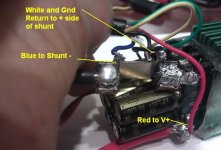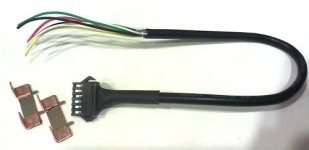recumpence
1 GW
mdd0127 said:e-bike problem = checking an internet thread for updates every hour.....
Every 10 minutes?
Welcome to the darkside..........
Matt
mdd0127 said:e-bike problem = checking an internet thread for updates every hour.....
mwkeefer said:Justin,
Since most High Voltage RC controllers are optically isolated... I would think providing a 5v rail could be very useful and eliminate the need for an additional 50.00 HV Battery Eliminator Circuit.
Any chance (wish list) of having an input to trigger shifting back and forth from Wye to Delta?
rodgah said:I would be interested in it for sure!
mwkeefer said:PS: Althought I do have all needed MCU flashing HW, you are correct in assuming the PPM signal (its PPM not PWM) generated should work fine, provided that you hand off the recurrance of signals to the MCU itself (some abstract PWM functions)...
in other words, it will work great as long as your MCU isn't tied up too terribly with other functions to cause a miss in timing output (guessing you checked it out on a scope?).
mwkeefer said:Warren,
I think you will need to run the Ground (for reference) and the signal line down to the ESC input on the HV160 ICE but .... it may even need the +5v to power the input stage to power the optocouplers on the input side, this is an assumption but you can try ground and signal first alone and it may be sufficient to get it working
Regards,
Mike



www.recumbents.com said:Wow this is a great idea! Plug the throttle into the CA and then just one wire down to the ESC. Should this eliminate need for both the BEC and the servo tester when used with a Casle Creations HV160?

Thank you Justin!
-Warren.
Kepler said:Justin, will the Beta version have protection so that the ESC BEC +5V doesn't conflict with the CA +5V or is it just up to the end user being fully aware of the wiring requirements?
justin_le said:I'll throw in a few of the shunts and one of the short 6 conductor cable with mating female 6-pin connector to plug into the 6-pin connector on the CA, so that anyone will also have the parts to wire things up as depicted here.
.
Whiplash said:Justin, you are so good at this stuff, why not make a complete controller that includes the CA?

AussieJester said:I ordered me a CA and a BIG shunt from you
looks like the big shunt will be tossed in the draw now haha...
Nah, I don't like the whiny noise, and if I I'm gonna have a vehicle that has additional gearing complexity it'll be on something much sillier like this:p.s any chance you will build yourself up a "RC" motored bike in the near future Justin?
